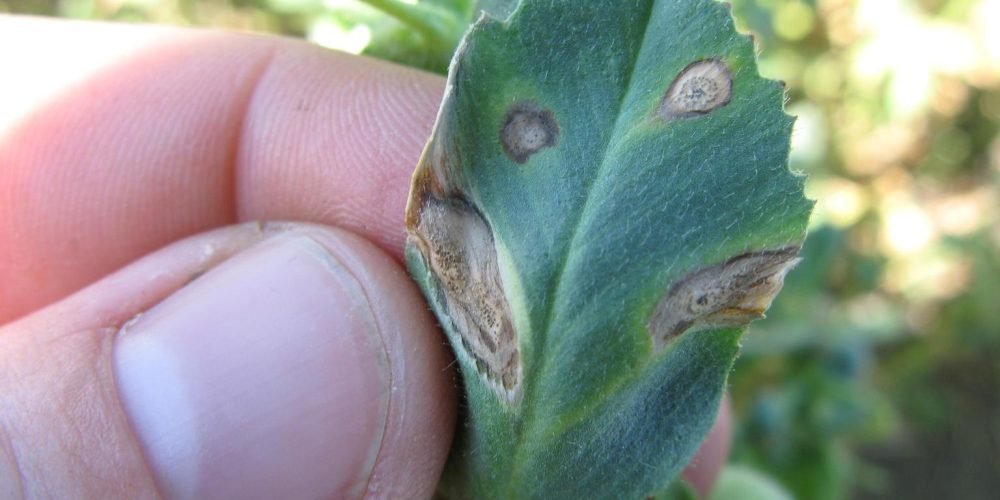Table of contents of the article
ToggleAscochyta blight of legumes is a fungal disease that threatens legume crops, causing necrotic spots on leaves and stems. In this article on your website, World of Plants, we will learn how to deal with this deadly disease.
Symptoms of ascochyta blight on legumes
Name of the diseaseAscochyta blight
Scientific name: Phoma rabiei (chickpeas), Ascochyta fabae f.sp. fabae (faba beans), Ascochyta fabae f.sp. lentis (lentils), Ascochyta pisi (field peas)
Type: fungal
Disease family: Didymellaceae
Symptoms first appear as small, irregularly shaped areas, brown to crimson in color. As wet weather continues, the spots expand, merge with each other, and tend to turn black. The fungus reaches the stem through the leaf petioles, where oval spots appear on it, and the spots take on a brown-crimson color. Severe infestation can result in the stem becoming surrounded near the soil surface, known as foot rot, leading to the plant weakening and falling. The fungus also reaches the pods, where small, dark-colored spots appear at first. Severe infection leads to incomplete growth and the production of small, shrunken seeds, with a change in color. The seeds may not show any apparent symptoms. If contaminated seeds are planted, the seedlings rot and die.
Causes of Ascochyta blight on legumes
These fungi reproduce asexually with pycnidid spores that arise inside pycnidid vessels formed inside the host tissue, and their mouth is slightly protruding on the surface. Pycnidia spores are transparent, straight or curved, mostly two-celled, and emerge from the mouth of the receptacle in a sticky jelly.
Suitable conditions for the spread of Ascochyta blight on legumes
The winds accompanying rain help transport it to greater distances. The disease is suitable for the spread of a temperature between 20 - 25 C, and a relative humidity between 85 - 98 %.
It has been observed in Syria that suitable conditions for the spread of the disease prevail from mid-January to mid-February, so early crops are severely infected with the disease, while late crops help escape infection.
Development cycle of Ascochyta blight on legumes
The fungus overwinters on the remains of the infected crop, or in the form of a dormant mycelium in the infected seeds. Fungal spores can also be carried externally on the surface of the seeds.
In the spring, the fungus forms ascospores on the remains of the infected crop to be spread by the wind. The spread of the ascospores continues for several weeks, and when they fall on the leaves or stems of chickpea plants, they germinate, when moisture is available for at least two hours on the surfaces of the plants, and infection occurs. After the symptoms appear, pycnidia vessels form on the spots, and rain dissolves the gel and the pycnidid spores spread with the rain spray, and they move to nearby healthy plants, causing new infections.
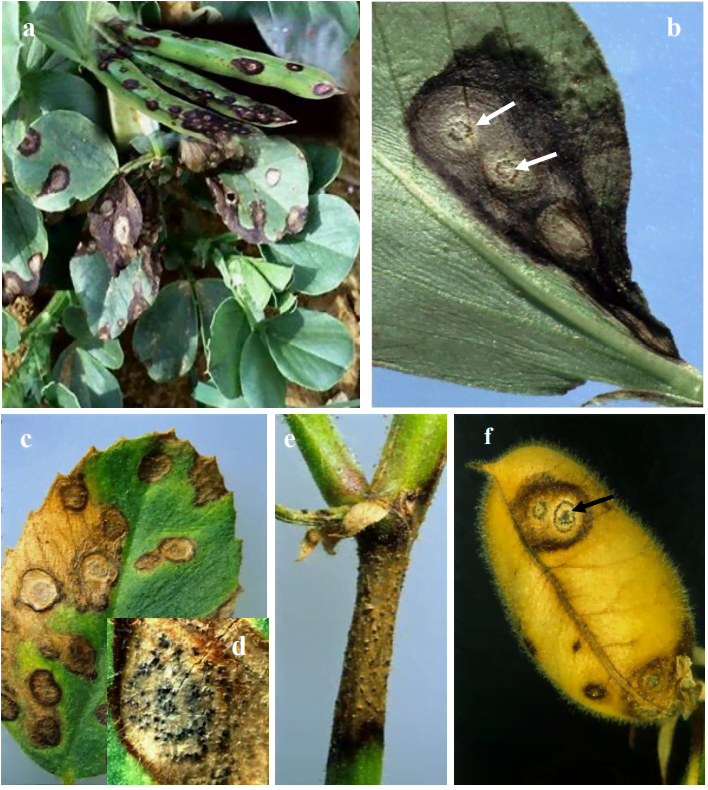
Symptoms of Ascochyta blight on legumes. (a) Symptoms of infection Bean leaves and pods It is noted that gray spots with dark edges appear. (b) Pycanids form in circular rings in the center of the spots (indicated by an arrow). (c) Symptoms of infection on chickpea leaves, as it is noted that brown circular or oval spots appear Plant stem Chickpeas with black pycnidia observed on the affected area. (e) Symptoms of infection on the stem of the chickpea plant, noting the observation of pycnidia on the infected tissue. (f) Circular spots on a chickpea pod, and pycnides arranged in rings are observed (indicated by an arrow).
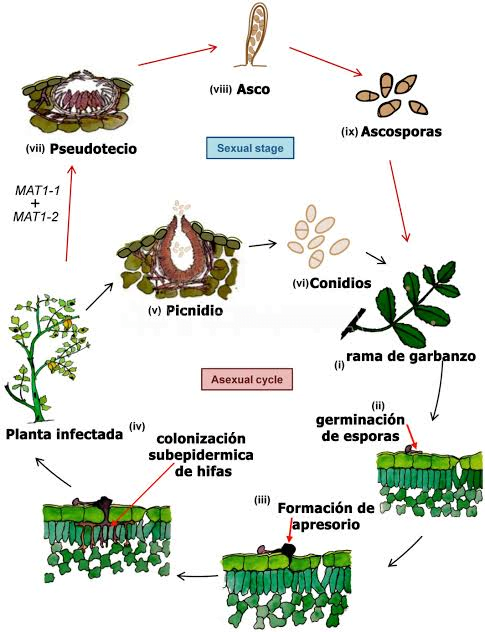
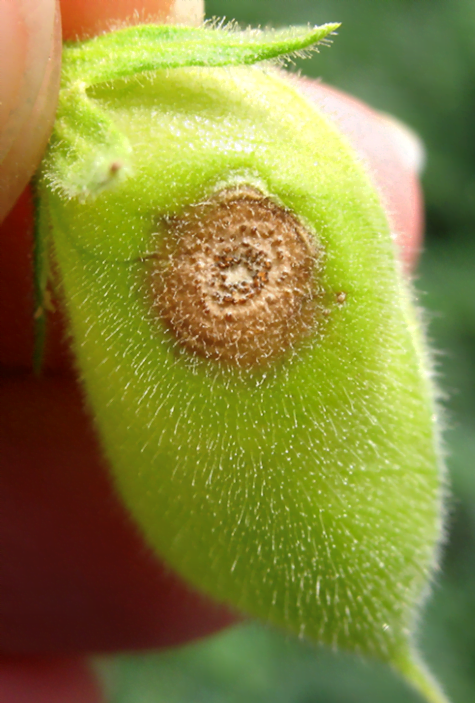
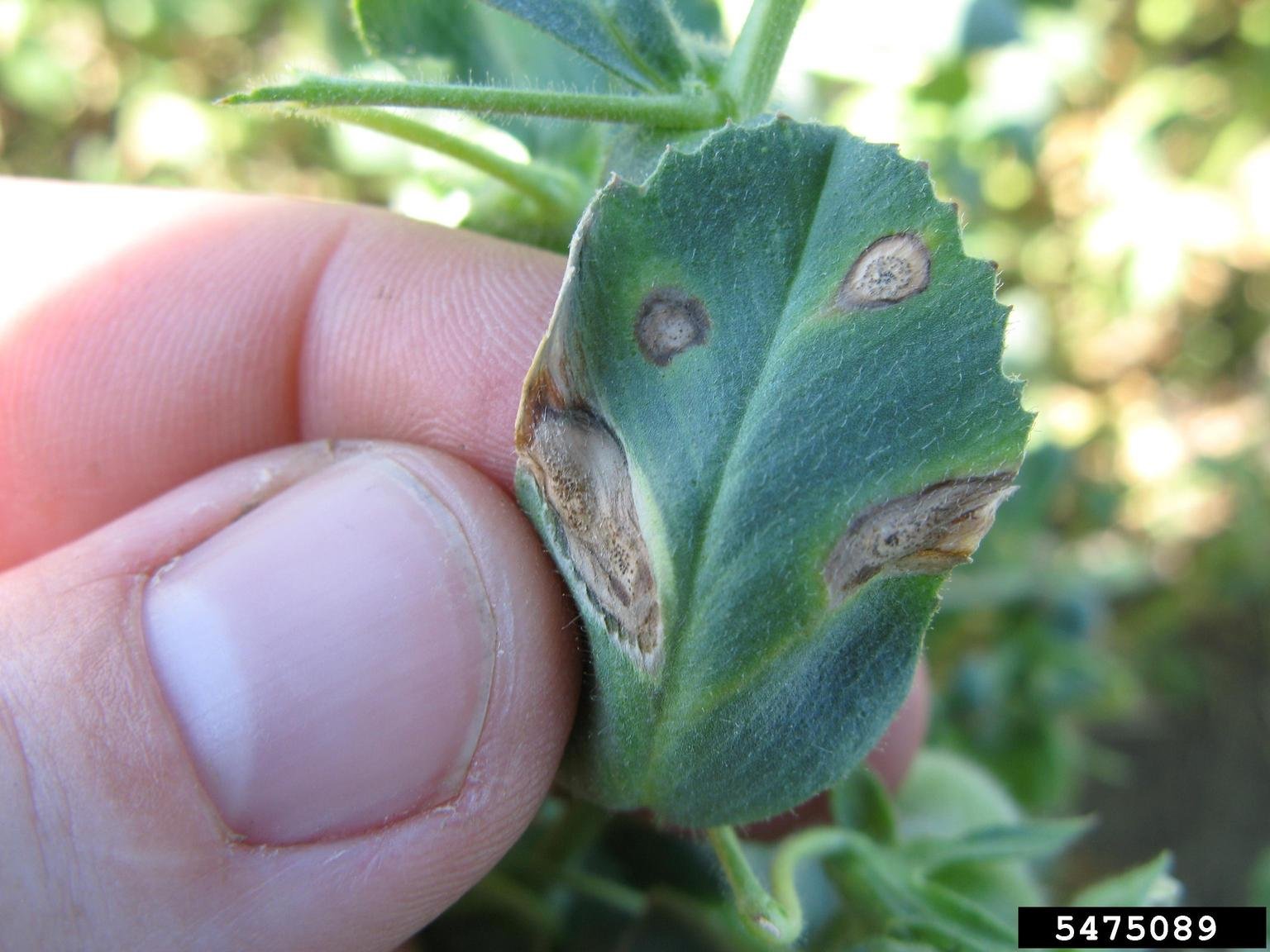
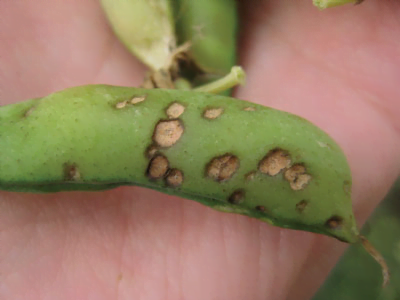
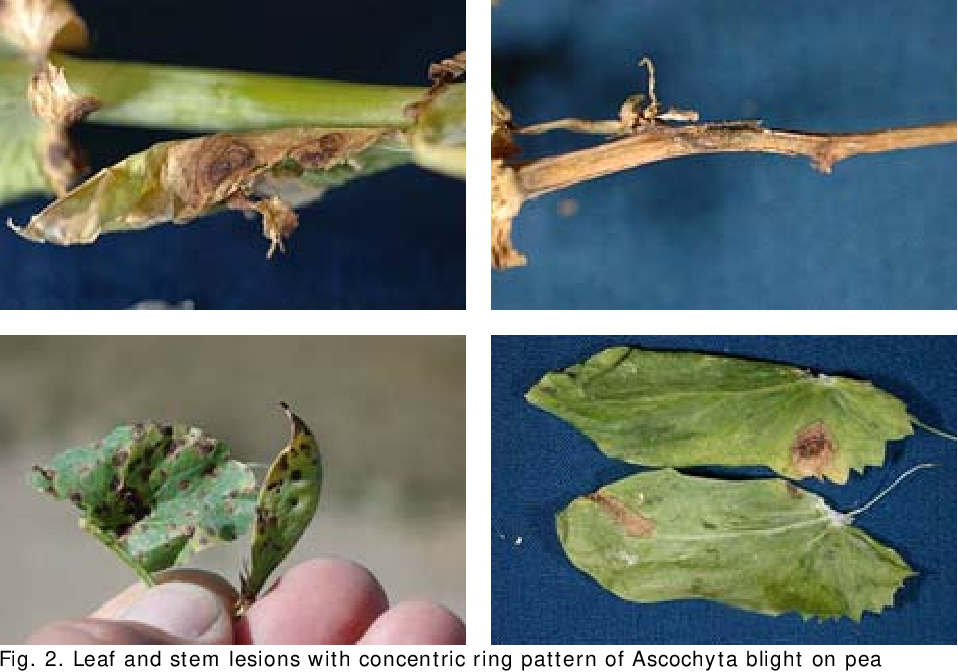
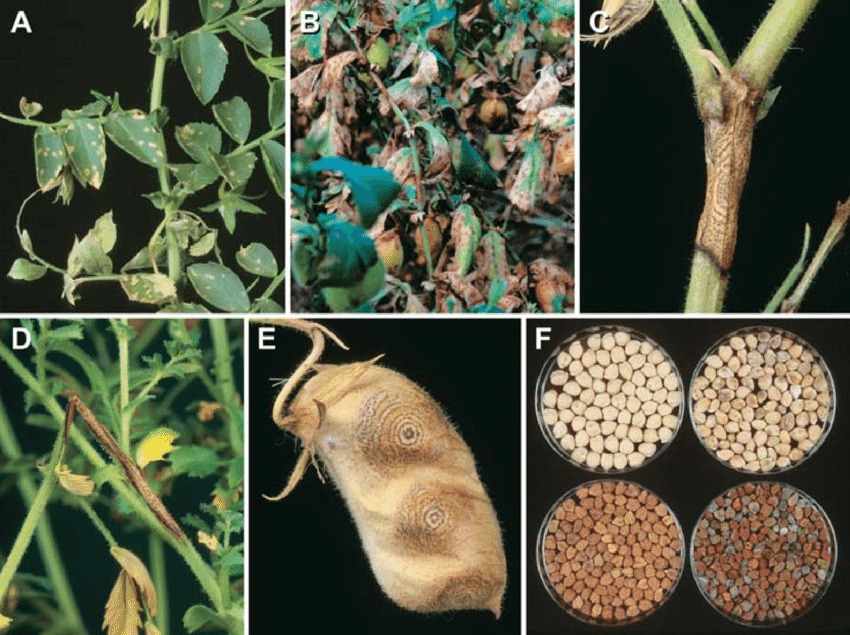
Losses from the spread of Ascochyta blight on legumes
spread out The disease occurs in most countries of the world that grow legumes It is considered one of the most dangerous diseases for chickpea plants in Syria. It also affects lentils, beans, peas, peanuts, and pastoral legumes. This disease causes significant economic losses, especially if it spreads in an epidemic manner, and losses may reach 70% in some countries. Losses include reduced yields and poor seed quality, which become carriers of the pathogen.
Control strategy
- Mechanical control
- Physical control (tillage, sanitation, pruning, solarization)
- Fungicides
Preventive measures to prevent the occurrence of ascochyta blight on legumes
- Dispose of the remains of the previous crop by burning them, or burying them in the soil at a suitable depth.
- Use resistant varieties.
- Follow a long agricultural cycle.
- Use healthy seeds produced in fields free of disease.
- Do not exaggerate with nitrogen fertilization, and pay attention to phosphate and potassium fertilization.
- Sterilize the seeds with appropriate fungicides such as 0.5% copper sulphate solution, Benomyl, Captan, and Thiram.
Chemical control recommendations
You can treat infected seeds with thiabendazole. In favorable weather conditions, spray a foliar fungicide based on chlorothalonil to prevent infection 7-10 days before flowering begins. Seven to ten days after spraying chlorothalonil, it is generally recommended to spray a fungicide on a regular basis, provided that it contains one of the following compounds (proline, indura, priaxor, etc.).
Anti-membership recommendations
Sorry, we do not know of any alternative treatment for ascochyta blight. Please contact us if you know of something that may help combat this disease. We look forward to hearing from you.
In conclusion, we would like to note that we, at the world of plants website, offer you all the necessary services in the world of plants, we provide all farmers and those interested in plants with three main services::-
- Artificial intelligence consulting service to help you identify diseases that affect plants and how to deal with them.
- Blog about plants, plant diseases and care of various crops ... You are currently browsing one of her articles right now.
- An application that provides agricultural consultations to clients, as well as a service for imaging diseases and knowing their treatment for free – Click to download the Android version from Google Play Store، Click to download the IOS version from the Apple App Store.
References:
Ascochyta blight on chickpea – plantix
Ascochyta blight on legumes - almerja
Ascochyta Blight (Garbanzo Beans) – crop science australia
Ascochyta Blight (Garbanzo Beans) – UNIVERSITY OF CALIFORNIA AGRICULTURE AND NATURAL RESOURCES
Symptoms of ascochyta blight [Ascochyta rabiei] in chickpea – researchgate




